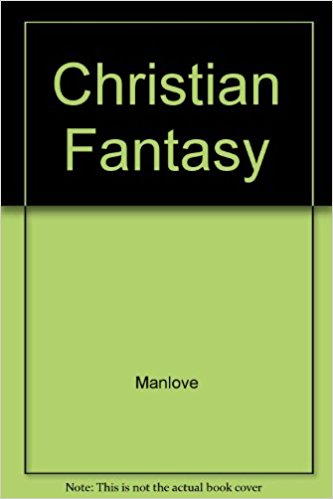

 |

|

The average rating for Christian fantasy based on 2 reviews is 3 stars.
Review # 1 was written on 2015-08-16 00:00:00 Gina Delbuono Gina DelbuonoChristian Fantasy charts the use of fantasy by Christian authors over nearly a millenium of literary change. I got a solid background on a lot of early fantasy precursors I was totally unfamiliar with and unlikely to ever read - the Queste del Saint Graal, or Pilgrim's Progress, or The Faerie Queene. I knew to expect it to some degree, but I was astonished at how overtly allegorical many of these books were; apparently it wasn't acceptable to write flights of fancy if they weren't didactic, and so these dour, sometimes literally Puritanical authors had to insist on the salience of their second meaning to absurd degrees. The Queste is populated with wandering literary critics who analyze its own events to ensure the audience understands; Faerie Queene and Pilgrim's Progress both name their characters after deadly sins and platonic ideals, lest we ignore their higher meanings. Manlove is a good writer and an insightful reader and critic; his opinions are sharp and his analyses feel thoughtful. But he wastes so much of the book concerned with theology, with how the writers conceptualized fantasy as a tool for religious communication, with the Christian meanings of their texts, that I often got bored and skimmed. It was certainly to the detriment of other angles on the topic. Manlove often acts like his chosen examples are Christian while the rest of the fantasy of the time is not; this may be true in the 20th century, but its an assertion that needs defending in 13th century chivalric Romance. Along the same lines, Manlove never investigates the influence Christianity has had on fantasy - which seems major, and was the thing I was most interested in. Regardless, it's well-written and I got some good background info from it on the historical evolution of fantasy. He's not stupid, just unfortunately preoccupied with things that don't exist/matter. I understand that it's important and helpful to read Christian works on their own terms, but it's kind of a shame that that's all the book does. |
Review # 2 was written on 2016-05-06 00:00:00 David Larson David LarsonMy copy of AN ATLAS OF FANTASY is the 1979 paperback edition and is, alas, falling apart after years of use and abuse; at some point I'll track down a quality copy of the hardcover. I don't believe this was ever reprinted since the '79 Ballantine edition (the first edition from 1973 is slightly different) - or if it was, it wasn't updated or expanded. Which is too bad, as the fantasy genre has really exploded since the 1970s when this was originally published; on the other hand, I'd hate to have any of the more obscure and weird maps that are included in this edition dropped for the cartographic examples from the bajillions of current, in print Tolkien wanna-bes. And there have been other fantasy-map volumes published if you're interested in that sort of thing. What you get here is 200 or so pages of maps, presented in chronological order, reprinted and reproduced more-or-less exactly as drawn and published in their original sources - often by the writers of the various novels that are the predominate texts from which the maps are chosen. In most cases the maps are on the recto and a brief text describing little bit about the context - the work and author at the least - on the verso. A complete listing of all the maps included can be found in the Wiki entry for the book, but briefly they range from an 8th-century Spanish monks' conception of Eden to "The Four Lands" from Terry Brooks' SHANNARA series and "The Land" from Stephen R. Donaldson's THOMAS COVENANT trilogy. There are maps from religious and secular Utopias, humorous maps, maps from children's books, etc. The most-represented writers are Edgar Rice Burroughs, with 13 maps from his many series, and J.R.R. Tolkien with 7 of his own beautifully done maps of various parts of Middle-Earth. In short, lovers of cartography and fantasy should all hunt this down, preferably in hardcover as the binding on paperback isn't that sturdy and is liable to more stress and wear by the wide format of the book. |
CAN'T FIND WHAT YOU'RE LOOKING FOR? CLICK HERE!!!